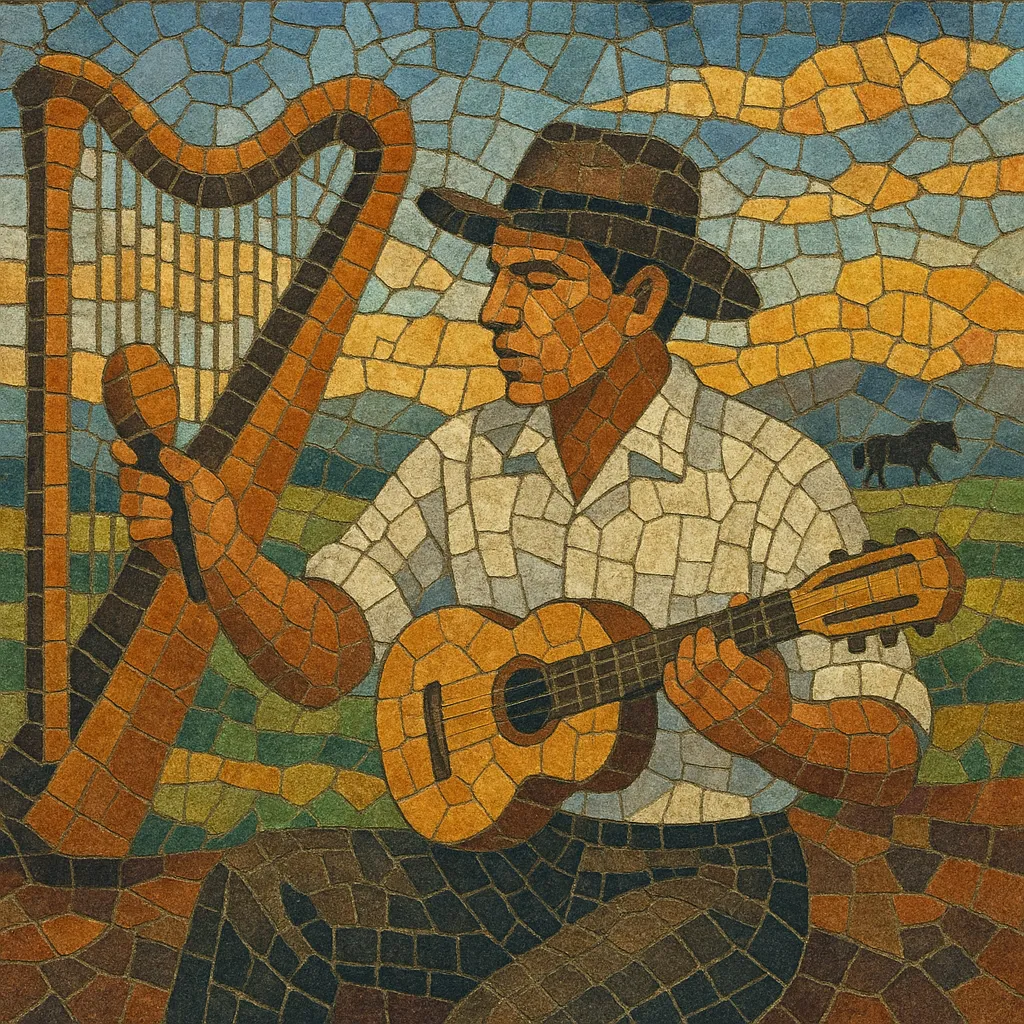Música llanera is the folkloric music of the Orinoco plains (Llanos) of Venezuela and eastern Colombia. It is built around the distinctive joropo llanero dance-song tradition, featuring rapid, interlocking rhythms in a characteristic 3/4–6/8 sesquiáltera feel.
Typical ensembles include arpa llanera (plains harp), cuatro (a small four‑string guitar), maracas, bandola llanera, and voice. The music ranges from high-energy, virtuosic "golpes" and the iconic pieces pajarillo, quirpa, and zumba que zumba, to the slower, lyrical "pasaje" numbers. Singing often uses improvised coplas and contrapunteo (sung duels), with lyrics celebrating cattle-driving life, rivers, horses, love, and the vast prairie landscape.
Its timbre is defined by the bright, percussive arpa llanera arpeggios, the crisp, syncopated cuatro strumming (golpe llanero), and the maracas’ complex polyrhythms that glue the ensemble together while propelling dancers’ zapateo footwork.
Música llanera coalesced in the Llanos during the late colonial and early republican periods, when Iberian dances (fandango, jota, pasodoble, and the European waltz) met Indigenous rhythmic sensibilities and Afro-descendant performance practices. This fusion produced the llanero variant of joropo, marked by sesquiáltera (3/4 and 6/8 cross‑rhythm), strummed strings, and vigorous dance footwork.
By the 19th century the core ensemble—arpa llanera, cuatro, and maracas—was established, sometimes joined by bandola llanera. Oral composition and improvisation thrived through coplas, décimas, and sung duels (contrapunteo), reflecting ranching life, seasonal cycles, and regional identity.
Radio and records in the mid‑1900s spread música llanera beyond the plains. Harpist-composer Juan Vicente Torrealba helped codify instrumental forms, while Simón Díaz popularized the genre internationally with memorable melodies and refined vocal delivery. The pasaje emerged as a widely cherished lyrical form alongside brisk golpes and pajarillos.
Artists such as Reynaldo Armas, Teo Galíndez, Reina Lucero, and Luis Silva in Venezuela, and Orlando “Cholo” Valderrama and Walter Silva in Colombia, brought the style to large audiences. Staged festivals and competitions standardized performance formats and nurtured virtuosic harp, cuatro, and maraca techniques.
Modern productions may add bass or drum set while preserving the genre’s acoustic core. Ensembles and soloists experiment with expanded harmony and arrangements, collaborate in world-fusion contexts, and leverage digital platforms to keep the contrapunteo tradition and dance practices vibrant across the Venezuelan and Colombian diasporas.


